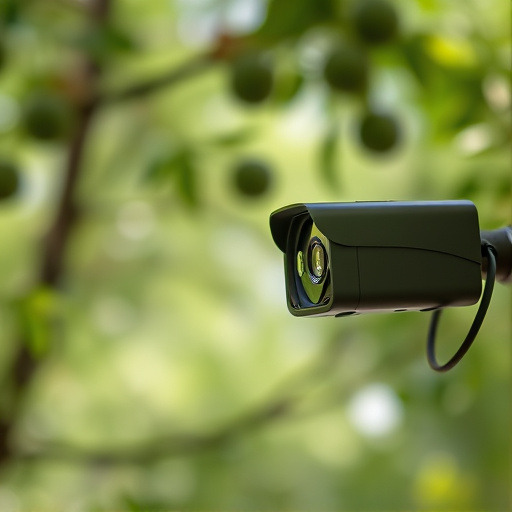This guide equips both Airbnb hosts and guests with knowledge on how to identify hidden spy cameras, addressing a growing privacy concern in short-term rentals. It highlights common hiding spots for these devices, educates users about potential risks, and offers proactive solutions like scanning listings, examining rooms, and using physical barriers. By staying vigilant, individuals can enhance their safety and protect their privacy while utilizing platforms like Airbnb.
In today’s digital age, privacy concerns have reached new heights. One of the most pressing issues is covert monitoring through spy cameras in shared living spaces like Airbnb. This comprehensive guide explores understanding and identifying these hidden devices, with a specific focus on practical tips for professionals tasked with ensuring guest safety. Learn how to navigate legal implications and counteract hidden surveillance, especially when it comes to spotting spy cameras in Airbnb accommodations.
- Understanding Covert Monitoring Systems: Unveiling the Basics
- Airbnb and Spy Cameras: A Growing Concern for Guests and Hosts
- Professional Placement Guide: Identifying Spy Cameras in Everyday Settings
- Legal Implications and Safety Measures to Counteract Hidden Surveillance
Understanding Covert Monitoring Systems: Unveiling the Basics
Covert monitoring systems, often referred to as spy cameras or hidden surveillance devices, are a discrete way to capture video and audio footage without raising suspicion. These systems can be incredibly useful for various purposes, from enhancing home security to professional investigations. However, with their growing popularity, especially in high-risk areas like short-term rentals like Airbnb, it’s essential to understand how to spot them.
Airbnb hosts and guests alike should be aware of the common places where spy cameras might be hidden. This includes discreetly placed devices in rental properties, such as light switches, smoke detectors, or even seemingly ordinary objects like decorative figurines. By being vigilant and knowing what to look for, users can ensure a safer and more transparent experience on these platforms.
Airbnb and Spy Cameras: A Growing Concern for Guests and Hosts
In recent years, the rise of short-term rental platforms like Airbnb has transformed the way people travel and earn income. However, a sinister trend has also emerged—the use of hidden spy cameras in Airbnb listings. Guests booking stays in seemingly innocent homes could be at risk of having their privacy invaded, with footage captured without their knowledge or consent. Spy cameras are often disguised as everyday items like smoke detectors, power outlets, or even light bulbs, making them almost impossible to detect for the untrained eye.
This growing concern has led many to wonder: How can guests protect themselves? The first step is to be vigilant and aware of potential risks. Before checking in, take time to inspect the property’s photos and reviews—look for any signs or mentions of security cameras or unusual items that could indicate their presence. Additionally, consider using trusted third-party tools designed to scan listings for known issues, including hidden camera spots. By taking proactive measures, Airbnb guests can enhance their safety and peace of mind during their stays.
Professional Placement Guide: Identifying Spy Cameras in Everyday Settings
In today’s digital era, privacy concerns have led many individuals and businesses to become more vigilant about identifying hidden surveillance devices, such as spy cameras. When renting or staying at an Airbnb, it’s crucial to know how to spot these covert monitoring systems to ensure your personal information remains secure. Start by examining the room thoroughly for any unusual objects or devices, especially in common areas like bathrooms or bedrooms. Look for small, discreet cameras tucked away in corners or behind furniture, which are often used as spy cameras due to their unobtrusive nature.
Additionally, pay close attention to electrical outlets and power cords. Spy cameras can be disguised as everyday items like smoke detectors, clocks, or power strips. Check if the room has a variety of outlets and ensure none appear excessively cluttered with cords. Keep an eye out for any signs of tampering with the wiring or unusual markings on walls and ceilings. By being proactive and observant, you can help protect your privacy while ensuring a safe stay in unfamiliar spaces.
Legal Implications and Safety Measures to Counteract Hidden Surveillance
The covert monitoring system, while offering advantages in security and professional placement, comes with significant legal implications. It’s crucial for both individuals and businesses to understand that installing hidden cameras without consent is a breach of privacy and can lead to severe legal consequences. In many jurisdictions, surveillance cameras must be clearly visible to inform those within the viewing area, protecting citizens’ rights and promoting transparency.
To counteract hidden surveillance, such as spotting spy cameras in Airbnb rentals, tenants should remain vigilant and inspect their accommodations for any unusual devices. Regularly checking for hidden camera signs—like small, unobtrusive lenses or unusual wiring—can help identify potential breaches of privacy. Additionally, using privacy-focused products like opaque film for windows and covering mirrors can serve as a physical barrier against covert monitoring. Landlords and businesses should prioritize open communication and obtain explicit consent before installing any surveillance equipment to stay within legal boundaries and maintain the trust of their clients or tenants.
In an era where privacy is increasingly threatened, understanding and counteracting covert monitoring systems is crucial. Our guide has illuminated the basics of these systems and their prevalence in everyday settings, particularly within the sharing economy. We’ve explored the legal landscape surrounding spy cameras, such as those found in Airbnb listings, emphasizing the importance of safety measures to protect individuals’ privacy. By equipping ourselves with knowledge on how to spot spy cameras, we can navigate our surroundings more conscientiously and advocate for stronger legal protections against hidden surveillance.
